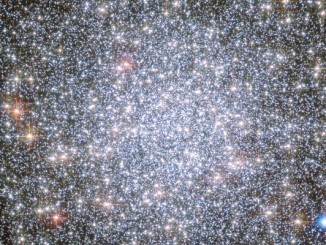
Articles by Astronomy Now

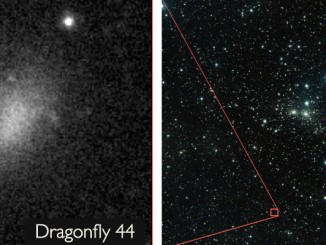
‘Fluffiest galaxies’ discovered by Keck Observatory
An international team of researchers have used the W. M. Keck Observatory to confirm the existence of the most diffuse class of galaxies known in the universe. These Ultra Diffuse Galaxies (UDGs) are nearly as wide as our own Milky Way galaxy — about 60,000 light-years — yet harbour only one percent as many stars.
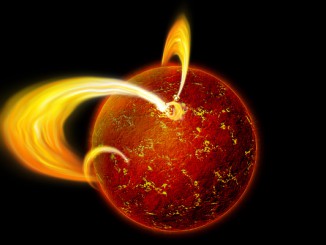
Magnetar near Galactic Centre supermassive black hole delivers surprises
Magnetars are dense, collapsed stars that possess enormously powerful magnetic fields. At a distance that could be as small as 0.3 light-years from the 4-million-solar mass black hole in the centre of our Milky Way galaxy, magnetar SGR 1745-2900 is by far the closest neutron star to a supermassive black hole ever discovered and is likely in its gravitational grip.
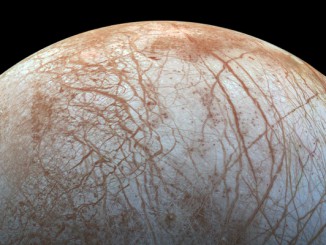
Briny seas maybe lurking on Europa
A decade-long question about the nature of dark spots on Europa’s surface has potentially been solved, with scientists suggesting that these spots are likely signs of irradiated sea salt from a subsurface ocean, deposited onto the surface through interactions with its rocky seafloor. If this is indeed the case, then these findings are an important consideration for assessing the habitability of the planet and whether it could support life or not.
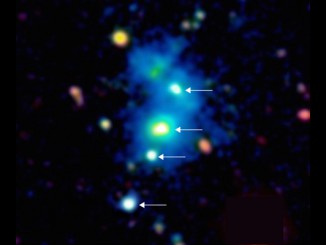
Astronomers baffled by discovery of rare quasar quartet
Hitting the jackpot is one thing, but if you hit the jackpot four times in a row you might wonder if the odds were somehow stacked in your favour. A group of astronomers led by Joseph Hennawi of the Max Planck Institute for Astronomy have found themselves in exactly this situation. They discovered the first known quasar quartet: four quasars, each one a rare object in its own right, in close physical proximity to each other.
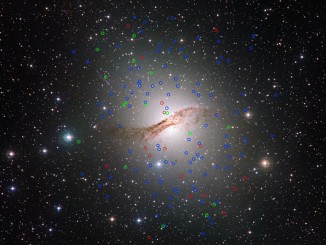
The dark side of globular star clusters
Observations with ESO’s Very Large Telescope in Chile have discovered a new class of “dark” globular star clusters around the giant galaxy Centaurus A. These mysterious objects look similar to normal clusters, but contain much more mass and may either harbour unexpected amounts of dark matter, or contain massive black holes — neither of which was expected nor is understood.
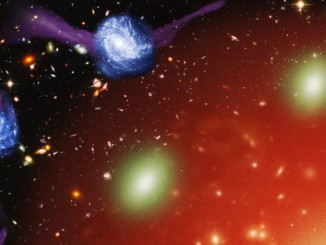
Galactic death by strangulation
Astronomers have long wondered how galaxies die and by what means. Now a team of researchers from the University of Cambridge and the Royal Observatory Edinburgh have found that the primary cause of galactic death is by the cut off of material needed to make new stars – a process known as strangulation.
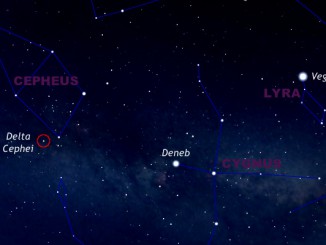
Delta Cephei’s secret companion and intriguing past
Delta (δ) Cephei, prototype of Cepheids, which has given its name to all similar variable stars, was discovered 230 years ago by the English astronomer John Goodricke. The Cepheids role as distance calibrators for more than a century means δ Cephei is one of the most studied stars, but astronomers were shocked to discover that they lacked an essential piece of information…

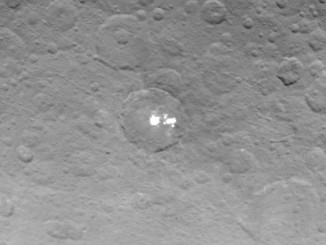
Ceres’ mysterious white spots resolved in latest Dawn images
The enigmatic white features on the dwarf planet Ceres are better resolved in a new sequence of images taken by NASA’s Dawn spacecraft on May 3rd and 4th. In this closest-yet view, the brightest spots within a crater in the northern hemisphere are revealed to be composed of many smaller spots. However, their exact nature remains unknown.
